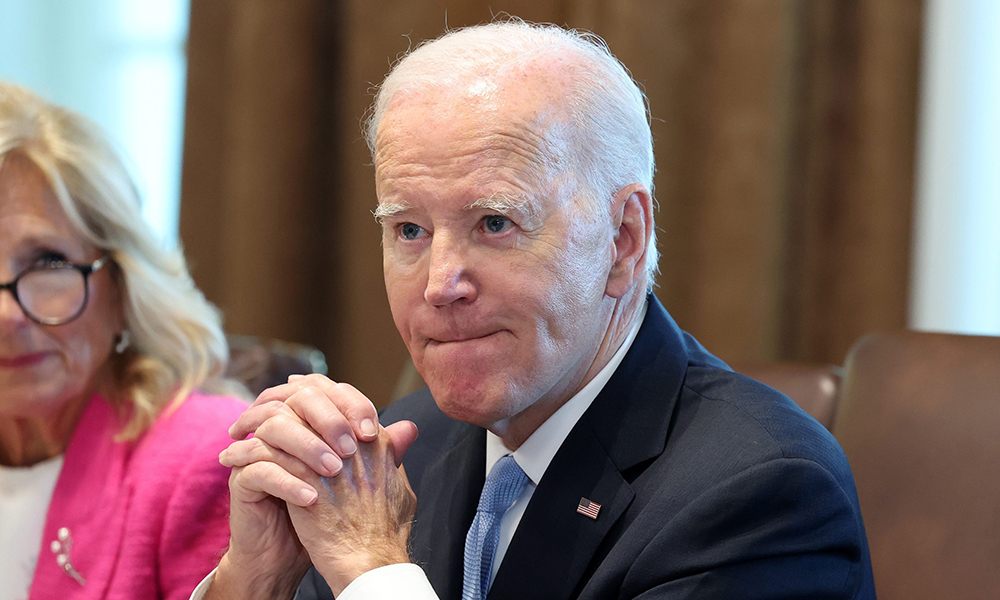
今年8月,美国批发价格加速上涨,表明尽管美联储(Federal Reserve)连续大幅升息,美国的通胀却依然居高不下。
美国劳工部(Labor Department)在9月14日表示,今年8月的美国生产者价格指数(用以衡量消费者受到冲击之前的通货膨胀)较去年同期上升1.6%,高于7月的同比小幅上升0.8%和6月的仅上升0.1%。这一上升在很大程度上是受到天然气价格大幅上涨的推动。
美国的核心通胀(剔除波动较大的能源和食品价格)在今年8月较上年同期上涨2.2%,低于7月2.4%的同比涨幅。
批发价格的上涨速度仍然慢于消费者成本,这表明随着批发价格涨幅收窄转化为消费者价格涨幅下降,通胀可能会继续降温。9月14日公布的数据反映了制造商、农民和批发商收取的价格。
美国政府在9月13日称,消费者价格指数(最广受关注的通胀指标)今年8月同比上涨3.7%,高于7月3.2%的同比涨幅。不过,核心通胀(剔除波动较大的能源和食品价格)却从7月的4.7%降至8月的4.3%。
同样在9月14日,美国政府公布今年8月零售额增长了0.6%,主要因为天然气价格的大幅上涨推动加油站销售额上升。如果不计燃料销售,零售额则仅增长0.2%。
环比来看,今年8月批发价格上涨0.7%,为一年多来的最大涨幅,高于7月0.4%的涨幅。核心批发价格今年8月小幅上涨0.2%,低于7月0.3%的涨幅。正在通过加息来对抗通胀的美联储目前密切关注着核心价格,因为该机构认为它们是衡量未来通胀趋势的更好指标。
现在,消费者通胀依然远高于美联储2%的目标,而8月批发价格指数的上升凸显了通胀的进一步下降也许不会那么顺利。
今年早些时候,随着天然气价格的下跌和供应链的混乱局面结束,通胀迅速下降,带动汽车、家具和电器等商品的价格下跌。2022年6月,消费者价格涨幅达到9.1%的峰值,一年后跌至3%,然后在今年7月和8月略微回升。
此外,批发通胀在2022年3月达到峰值11.7%后也快速下降。但一些经济学家担心,由于燃料价格下降和供应链情况改善的好处基本上已经实现,今后美联储将更难达成通胀降至2%的目标。
在过去的12次议息会议中,美联储已经11次上调关键利率,至5.4%左右,为22年来的最高水平。但大多数经济学家预计,美联储在9月19日至20日的下次议息会议上将维持利率不变,因为官员们需要更多的时间来仔细研究迄今为止实施的加息的影响。不过,由于未来几个月通胀可能只会逐步下降,美联储也许会在年底前再次提高借贷成本。(财富中文网)
译者:中慧言-刘嘉欢
今年8月,美国批发价格加速上涨,表明尽管美联储(Federal Reserve)连续大幅升息,美国的通胀却依然居高不下。
美国劳工部(Labor Department)在9月14日表示,今年8月的美国生产者价格指数(用以衡量消费者受到冲击之前的通货膨胀)较去年同期上升1.6%,高于7月的同比小幅上升0.8%和6月的仅上升0.1%。这一上升在很大程度上是受到天然气价格大幅上涨的推动。
美国的核心通胀(剔除波动较大的能源和食品价格)在今年8月较上年同期上涨2.2%,低于7月2.4%的同比涨幅。
批发价格的上涨速度仍然慢于消费者成本,这表明随着批发价格涨幅收窄转化为消费者价格涨幅下降,通胀可能会继续降温。9月14日公布的数据反映了制造商、农民和批发商收取的价格。
美国政府在9月13日称,消费者价格指数(最广受关注的通胀指标)今年8月同比上涨3.7%,高于7月3.2%的同比涨幅。不过,核心通胀(剔除波动较大的能源和食品价格)却从7月的4.7%降至8月的4.3%。
同样在9月14日,美国政府公布今年8月零售额增长了0.6%,主要因为天然气价格的大幅上涨推动加油站销售额上升。如果不计燃料销售,零售额则仅增长0.2%。
环比来看,今年8月批发价格上涨0.7%,为一年多来的最大涨幅,高于7月0.4%的涨幅。核心批发价格今年8月小幅上涨0.2%,低于7月0.3%的涨幅。正在通过加息来对抗通胀的美联储目前密切关注着核心价格,因为该机构认为它们是衡量未来通胀趋势的更好指标。
现在,消费者通胀依然远高于美联储2%的目标,而8月批发价格指数的上升凸显了通胀的进一步下降也许不会那么顺利。
今年早些时候,随着天然气价格的下跌和供应链的混乱局面结束,通胀迅速下降,带动汽车、家具和电器等商品的价格下跌。2022年6月,消费者价格涨幅达到9.1%的峰值,一年后跌至3%,然后在今年7月和8月略微回升。
此外,批发通胀在2022年3月达到峰值11.7%后也快速下降。但一些经济学家担心,由于燃料价格下降和供应链情况改善的好处基本上已经实现,今后美联储将更难达成通胀降至2%的目标。
在过去的12次议息会议中,美联储已经11次上调关键利率,至5.4%左右,为22年来的最高水平。但大多数经济学家预计,美联储在9月19日至20日的下次议息会议上将维持利率不变,因为官员们需要更多的时间来仔细研究迄今为止实施的加息的影响。不过,由于未来几个月通胀可能只会逐步下降,美联储也许会在年底前再次提高借贷成本。(财富中文网)
译者:中慧言-刘嘉欢
U.S. wholesale prices increases accelerated in August, a sign that inflation remains stubbornly persistent despite a series of sharp interest rate hikes by the Federal Reserve.
The Labor Department said on September 14 that its producer price index — which measures inflation before it hits consumers — increased 1.6% last month from a year earlier. That is up from a small 0.8% yearly increase in July and just 0.1% in June. Sharply higher gas prices drove much of the increase.
Excluding the volatile energy and food categories, core inflation rose 2.2% in August from a year earlier, down from a 2.4% yearly increase in July.
Wholesale prices are still rising more slowly than consumer costs, a sign that inflation may continue to cool as the weaker wholesale price gains translate into smaller price increases for the consumer. The September 14 data reflect prices charged by manufacturers, farmers and wholesalers.
The government said on September 13 that the consumer price index, the most widely-followed inflation gauge, rose 3.7% in August from a year ago, up from a 3.2% yearly gain in July. Yet excluding the volatile energy and food components, core inflation fell to 4.3% in August from 4.7% in July.
Also on September 14, the government said retail sales rose 0.6% in August, largely because sharply higher gas prices pushed up gas station sales. Excluding fuel, retail sales rose just 0.2%.
On a month-to-month basis, wholesale prices rose 0.7% in August, the biggest gain in more than a year, up from a 0.4% increase in July. Core wholesale prices ticked up 0.2% last month, down from 0.3% in July. The Federal Reserve, which is fighting inflation by raising interest rates, closely monitors core prices because they are considered a better measure of future inflation trends.
For now, consumer inflation remains far above the Fed’s 2% target, and the pickup in wholesale prices last month underscores that further declines in inflation will likely be bumpy and uneven.
Earlier this year inflation fell rapidly as gas prices dropped and supply chain snarls unraveled, which brought down the prices of goods such as cars, furniture, and appliances. Consumer price gains peaked at 9.1% in June 2022, then plunged to 3% a year later, before ticking higher in July and August.
Wholesale inflation year-over-year has also fallen fast, from a peak of 11.7% in March 2022. But some economists worry that it will be harder to get inflation down to the Fed’s 2% target, now that the benefits of cheaper fuel and improved supply chains have largely been realized.
The Fed has pushed up its key interest rate 11 times in its past 12 meetings, to about 5.4%, the highest in 22 years. Yet most economists expect it will leave its rate unchanged at its next meeting Sept. 19-20, as officials take more time to scrutinize the impact of the increases it has implemented so far. Still, with inflation likely to decline only gradually in the coming months, the Fed could hike borrowing costs one more time before the end of the year.






